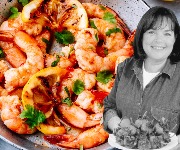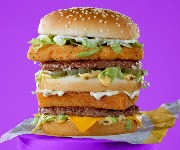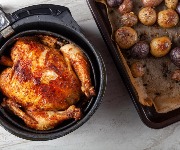Taking a Punt on Pigeon
In these days of eco-consciousness and food security scares, the British pigeon is still a great, untapped resource.
Should pigeons ever get their act together and form their own anti-defamation league they should probably go after Woody Allen first – he, after all, is the man who first called them ‘rats with wings’, in Stardust Memories, way back in 1980.
Assuming the feathered litigators are successful, and take Allen for everything he’s got, they could then invest their many millions in hiring a high-powered PR company to deal with their image problem.
Their over-paid flack could disseminate the idea that we wouldn’t have won WWII without the brave efforts of pigeon soldiers, and that pigeon fanciers are backed by the Queen.
With that done we can then start selling more of our unpopular feathered friends for their flesh. Because in these days of eco-consciousness and food security scares the British pigeon is still a great, untapped resource.
Naturally, as the majority of you will have gathered, I’m talking about the decent country-dwelling common wood pigeon, in season from early September until the end of March, which although considered a pest by farmers because it eats their crops in addition to its natural diet of wild berries, is a pleasure to be around compared with its cousin; the lazy, disease-ridden, fare-dodging, feral city pigeon that gives itself gout by standing in its own pooh.
Although closely related, the two have about as much in common as a beakless battery raised clucker and the finest Poulet de Bresse. Less in fact as eating a feral pigeon would most probably put you in hospital and wood pigeon is, with the exception of grouse, as bloodily delicious as a game bird gets.
Not only that but, much to the exasperation of shotgun-totting British farmers, its numbers are rising rapidly despite the fact it’s already our most common wild bird.
Chefs like pigeon because – aside from its versatility and flavour – it’s cheap.
But try finding it in your average the supermarket, or for that matter farmed squab (baby) pigeon, and you’ll most probably be disappointed.
It’s not that supermarkets wouldn’t pile it high if they could sell it - but they can’t. Because along with an aforementioned image problem (not helped by comical associations with rationing) pigeon is still considered an acquired taste. Chicken it ain’t and never will be. It doesn’t have the plumpness or the sweetness or the – let’s face it – pale, accessible blandness. Nor can you just whack it in the oven and get on with your life. It just requires a bit of cooking.
Also worth your attention:
Simon Goodman's Open pigeon pie
Most Recent
Comments
Be the first to comment
Do you want to comment on this article? You need to be signed in for this feature








